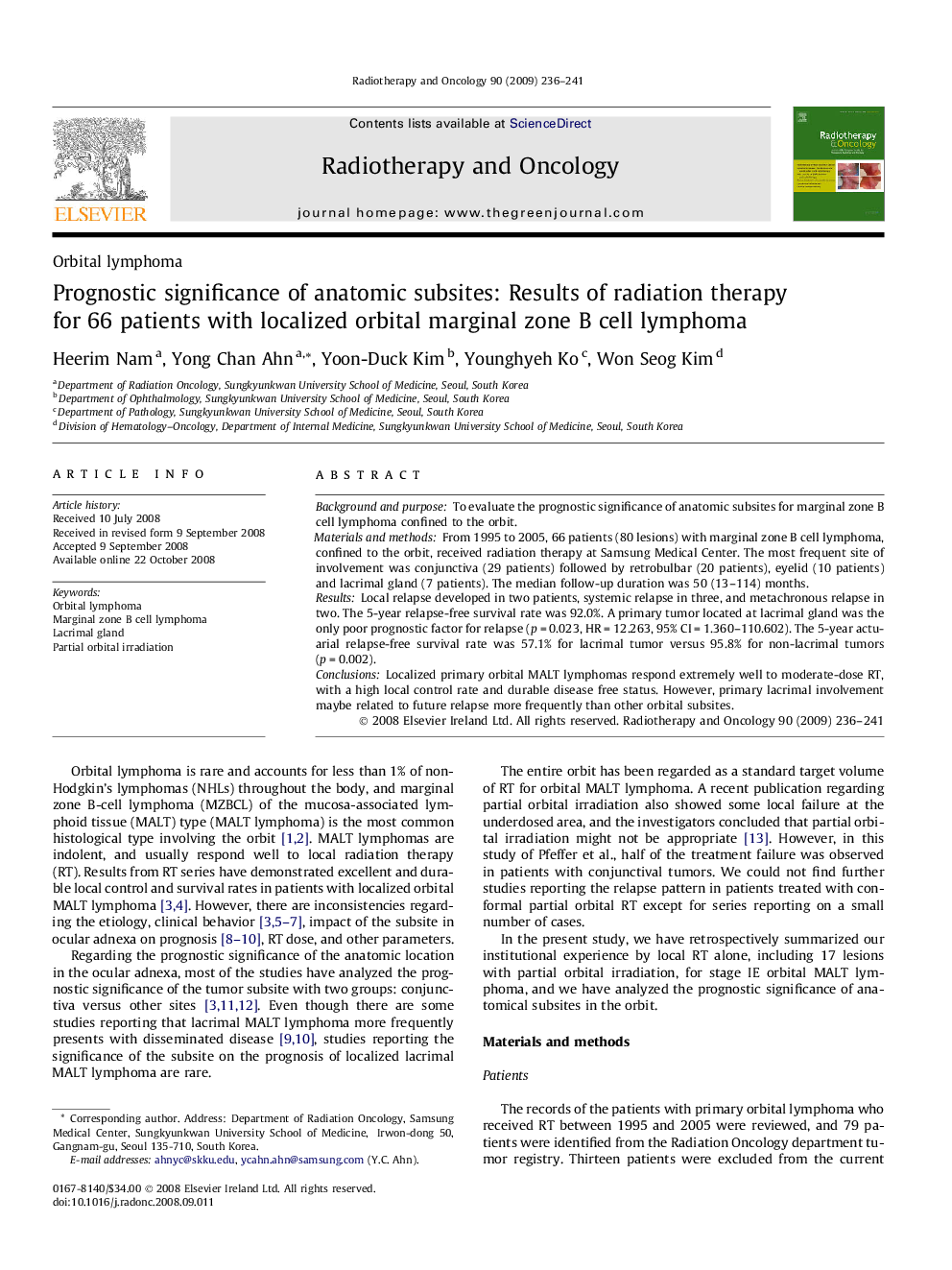| Article ID | Journal | Published Year | Pages | File Type |
|---|---|---|---|---|
| 2160125 | Radiotherapy and Oncology | 2009 | 6 Pages |
Background and purposeTo evaluate the prognostic significance of anatomic subsites for marginal zone B cell lymphoma confined to the orbit.Materials and methodsFrom 1995 to 2005, 66 patients (80 lesions) with marginal zone B cell lymphoma, confined to the orbit, received radiation therapy at Samsung Medical Center. The most frequent site of involvement was conjunctiva (29 patients) followed by retrobulbar (20 patients), eyelid (10 patients) and lacrimal gland (7 patients). The median follow-up duration was 50 (13–114) months.ResultsLocal relapse developed in two patients, systemic relapse in three, and metachronous relapse in two. The 5-year relapse-free survival rate was 92.0%. A primary tumor located at lacrimal gland was the only poor prognostic factor for relapse (p = 0.023, HR = 12.263, 95% CI = 1.360–110.602). The 5-year actuarial relapse-free survival rate was 57.1% for lacrimal tumor versus 95.8% for non-lacrimal tumors (p = 0.002).ConclusionsLocalized primary orbital MALT lymphomas respond extremely well to moderate-dose RT, with a high local control rate and durable disease free status. However, primary lacrimal involvement maybe related to future relapse more frequently than other orbital subsites.
